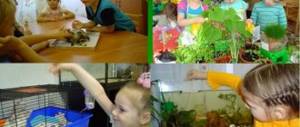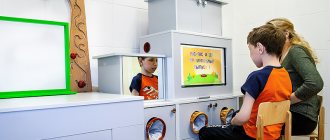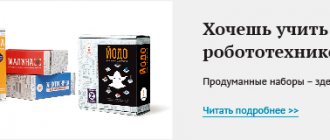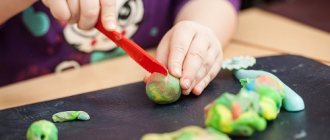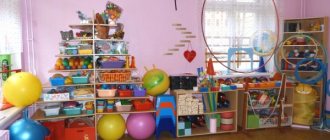Innovative technologies in speech therapy within the framework of the Federal State Educational Standard
Experience as a speech therapist. Innovative technologies in speech therapy practice
Being on the border of contact between pedagogy, psychology and medicine, speech therapy uses in its practice, adapting to its needs, the most effective, non-traditional methods and techniques of related sciences, which help optimize the work of the teacher - speech therapist.
Innovative technologies in speech therapy practice are only an addition to generally accepted, time-tested technologies (diagnostic technology, sound production technology, technology for the formation of speech breathing for various disorders of the pronunciation side of speech), these are: - new and more effective methods and tools, techniques that are the ultimate the result of the teacher’s intellectual activity; — new ways of interaction between teacher and child; - new stimuli that serve to create a favorable emotional background, promoting the inclusion of intact mental functions in work and the activation of impaired mental functions. In relation to the pedagogical process, innovation means the introduction of new things into the goals, content, methods and forms of education, the organization of joint activities of the teacher and the child. The main criterion for the “innovativeness” of a technology is to increase the efficiency of the educational process through its application. INNOVATIVE TECHNOLOGIES IN Speech Therapy: • art - therapeutic technologies; • modern technologies of speech therapy and finger massage; • modern technologies of sensory education; • body-oriented techniques; • “Su-Jok” – therapy; • cryotherapy; • information Technology. Types of art therapy: • music therapy (vocal therapy, playing musical instruments); • iso-therapy (non-traditional drawing techniques); • kinesiotherapy (dance therapy, body-oriented therapy, logorhythmics, psycho-gymnastics); • fairytale therapy; • puppetry; • mnemonics; • creative play therapy (sand therapy); • laughter therapy; • aromatherapy; • color therapy (chromotherapy). “Art therapy” is a means of free self-expression. In a special symbolic form: through a drawing, a game, a fairy tale, music - we can help a person give vent to his strong emotions, experiences, and gain new experience in resolving conflict situations. The main goal of art therapy is to develop a person’s self-expression and self-knowledge through creativity and to increase his adaptive abilities. The goals of art therapy in working with children are to promote the formation of high vitality and harmonious relationships with the outside world, the development of mutual understanding between children, as well as between children and adults. Teach your child self-expression, the ability to manage their feelings, experiences, emotions. Music therapy is a method of psychotherapy based on the emotional perception of music. Depending on the melody, its rhythmic basis and execution, music can have a wide variety of effects. Corrective tasks of music therapy: • normalization of neurodynamic processes of the cerebral cortex, normalization of biorhythm; • stimulation of auditory perception (activation of right hemisphere functions); • improvement of the general condition of children; • improving the quality of movements (expressiveness, rhythm, and smoothness develop); • correction and development of sensations, perceptions, ideas; • stimulation of speech function; • normalization of the prosodic side of speech (timbre, tempo, rhythm, expressiveness of intonation); • formation of word formation skills; • formation of the syllabic structure of a word. Elements of music therapy During a relaxing speech therapy massage, pieces that have a sedative effect are used, and during an active massage, pieces that have a tonic effect are used. It is also possible to use tonic pieces of music during dynamic pauses and articulatory gymnastics. Isotherapy techniques used for speech development: • “blotography” technique; • finger painting; • drawing with soft paper; • poke painting with a hard semi-dry brush; • drawing on glass; • nitcography; • drawing on semolina; • technique of drawing with leaves, sticks, pebbles, etc.; • cotton wool imprinting technique; • “cork impression” technique; • drawing with palms. Body-oriented techniques: All childhood experiences are associated with the development and improvement of voluntary movements (dressing, eating, walking, playing, and, of course, speaking). By paying attention to the development of the child’s motor sphere, we indirectly influence the development of mental properties. A child’s ability to control his bodily manifestations affects the development of his character, abilities and, of course, speech. • bioenergoplasty – combining the movements of the articulatory apparatus with the movements of the hand; • stretching – alternating tension and relaxation in different parts of the body, normalizes muscle hypertonicity and hypotonicity; • relaxation exercises – promote relaxation, introspection, recollection of events and sensations and are a single process; • breathing exercises – improve the rhythm of the body, develop self-control and volition. Kinesiological exercises are a set of movements that allow you to activate interhemispheric interaction: • develop the corpus callosum, • increase resistance to stress, • improve mental activity, • help improve memory and attention, • facilitate the process of reading and writing, • improve both the mood and well-being of the person performing them person. Exercises such as “Fist - rib - palm”, “Bunny - ring - chain”, “House - hedgehog - castle”, “Bunny - goat - fork”, etc. Speech therapy massage Speech therapy massage is one of the speech therapy technologies, an active method of mechanical effects aimed at correcting various speech disorders. The goal of speech therapy massage is not only to strengthen or relax articulatory muscles, but also to stimulate muscle sensations, which contributes to the clarity of kinesthetic perception. The kinesthetic feeling accompanies the work of all muscles. Thus, completely different muscle sensations arise in the oral cavity depending on the degree of muscle tension during the movement of the tongue and lips. The directions of these movements and various articulatory patterns when pronouncing certain sounds are felt. Massage of the muscles of the peripheral speech apparatus helps to normalize muscle tone and thereby prepare the muscles to perform complex movements necessary for the articulation of sounds. Performing speech therapy massage techniques requires a clear diagnosis of the state of muscle tone not only of the muscles involved in articulation, but also of the muscles of the face and neck. The main types of speech therapy massage include: • classic manual; • point; • hardware. Finger massage • massage of palm surfaces with stone, metal or glass multi-colored balls; • pin massage; • massage with nuts and chestnuts; • massage with hexagonal pencils; • massage with rosary; • massage with herbal bags; • stone massage; • massage with probes, probe substitutes; • massage with Su-Jok therapy devices. Logorhythmics is a system of musical-motor, speech-motor and musical-speech games and exercises carried out for the purpose of speech therapy correction. Cryotherapy is one of the modern non-traditional methods of correctional pedagogy, which consists in the use of games with ice. The dosed effect of cold on the nerve endings of the fingers has beneficial properties. Fairytale therapy is a method that uses the fairy tale form for speech development of the individual, expansion of consciousness and improvement of interaction through speech with the outside world. The main principle of fairy tale therapy is the holistic development of the individual, caring for the soul. Corrective tasks of fairy tale therapy: • creating a communicative orientation of each word and statement of the child; • improvement of lexical and grammatical means of the language; • improving the sound aspect of speech; • development of dialogic and monologue speech; • effectiveness of playful motivation for children's speech; • relationship between visual, auditory and motor analyzers; Elements of fairy tale therapy: • cooperation of the speech therapist with children and with each other; • creating a favorable psychological atmosphere in the classroom, enriching the child’s emotional and sensory sphere; • introducing children to the past and present of Russian culture and folklore. Puppet therapy is a section of art therapy that uses a doll as the main method of psychocorrective influence, as an intermediate object of interaction between a child and an adult. The goal of puppet therapy is to help smooth out experiences, strengthen mental health, improve social adaptation, increase self-awareness, and resolve conflict situations in collective activities. Mnemonics is a system of techniques that facilitate memorization and increase memory capacity by forming additional associations. Mnemonics helps in the development of: • coherent speech; • associative thinking; • visual and auditory memory; • visual and auditory attention; • imagination; • accelerating the process of automation and differentiation of delivered sounds. The essence of mnemonic schemes is as follows: for each word or small phrase, a picture (image) is created. Thus, the entire text is sketched schematically. Looking at these diagrams - drawings, the child easily reproduces textual information. Sand therapy is a therapy method that promotes better speech correction and the development of the emotional-volitional sphere. Sand therapy promotes: • improving practical communication skills using verbal and non-verbal means; • enrichment of vocabulary; • development of coherent speech; • encouraging children to take active action and concentrate attention; • development of imagination and imaginative thinking. Laughter therapy is a type of psychotherapy that helps to remove blocks, relax, and get rid of shyness. Humor and laughter lift your spirits, help establish communication connections, and allow you to effectively cope with stressful situations. Aromatherapy is the use of essential oils and oil suspensions to improve human health. Smells control mood, calm an overexcited nervous system, and increase performance. Children are sensitive and impressionable people who perceive the effects of aromatherapy without any prejudice, so their reaction to essential oils is always positive. The use of aromatherapy will help maintain a good mood in children, and also help cure colds and sleep disorders. Children love warm, sweet smells most. However, due to the fact that their body is still in a state of development, aromatherapy products should be used for them in very minimal dosages. It is best if the oils are applied to terracotta and clay figurines, aroma medallions, and pillows. Various products made from untreated wood, orange or grapefruit peels hold odors well. Types of aromatherapy: • baths; • spraying; • inhalation; • massage. Color therapy (Chromotherapy) – restoration of individual biological rhythm using specially selected color. The period of preschool childhood is also a period of intensive sensory development of the child. Stimulating the intellectual and emotional development of preschool children with color therapeutic agents is justified and effective. Working with color helps solve many problems: • increases the level of communication of children and their emotional responsiveness; • enriches the sensory and emotional experience of children; • introduces you to techniques for managing your feelings, and develops self-control skills. Children, even the smallest ones, are naturally programmed to have a certain reaction to a particular color. The mood, behavior and even state of health are influenced not only by the color of the surrounding space, but also by the color of the clothes the child is wearing. The presence of any color in a child’s life (for example, red) can invigorate and improve mood, while at the same time its excess can cause a state of overexcitation and increased motor activity. Color therapy undoubtedly contributes to: • improving the psychological microclimate in the children's team; • stimulation of the intellectual and emotional development of preschool children; • children's acquisition of psychophysical relaxation skills. Color therapy is indispensable when used in children's institutions. Educational information technology is a pedagogical technology that uses special methods, software and hardware (cinema, audio and video, computers, telecommunication networks) to work with information. Possibilities of using IT in speech therapy: • increasing motivation for speech therapy classes; • organizing objective monitoring of children's development and activities; • expansion of the plot content of traditional gaming activities; • the ability to quickly create your own didactic material; • visualization of acoustic components of speech; • expansion of the range of non-verbal tasks; • provide an unnoticeable transition for the child from play activities to learning activities; • significant opportunities in the development of HMF: schematization, symbolization of thinking; formation of the planning function of thinking and speech; • due to increased emotional tone, the material being studied is transferred more quickly into long-term memory. To interest children and make learning meaningful, we need non-standard approaches, individual development programs, and new innovative technologies. It is important to preserve both traditional approaches and develop new directions in speech therapy theory and practice, and also to remember that any innovation is not good in itself (“innovation for the sake of innovation,” but as a means, a method that serves a specific purpose. In this regard, it is very important stages of its development and dissemination, which precisely show the need and effectiveness of the new technology. Innovative methods of influence in the work of a speech therapist are becoming a promising means of correctional and developmental work with children with speech disorders. These methods are among the effective means of correction and help achieve the maximum possible success in overcoming speech difficulties in preschool children.Against the background of comprehensive speech therapy assistance, innovative methods, without requiring much effort, optimize the process of correcting children's speech and contribute to the improvement of the whole body.
We recommend watching:
Speech therapy constructor Difficulties in teaching reading to children with severe speech impairments Summary of educational activities in the compensatory preparatory group for children with severe speech impairments
Summary of educational activities in the older group of children with severe speech impairments on the topic: “Sound K”
Similar articles:
Summary of a speech therapy session with primary school children diagnosed with ODD
Summary of GCD for children of the senior speech therapy group
Summary of a speech therapy session with children 5-6 years old with mental retardation
Design of a speech therapy room for preschoolers
Summary of educational activities in the older group of children with severe speech impairments on the topic: “Sounds S - Z”
Non-traditional methods of therapy in speech therapy work
Chernyakova Tatyana
Non-traditional methods of therapy in speech therapy work
Non-traditional methods of influence in the work of a speech therapist are becoming a promising means of correctional and developmental work with children with speech disorders.
These methods of therapy are among the effective means of correction, increasingly used in special pedagogy and helping to achieve the maximum possible success in overcoming the speech difficulties of preschool children. Against the background of comprehensive speech therapy care, non-traditional methods of therapy , without requiring much effort, optimize the process of speech correction for children of speech pathologists and contribute to the improvement of the child’s entire body.
The effect of their use depends on the competence of the teacher. Ability to use new opportunities, incorporate effective methods into the system of correctional and developmental process, creating psycho-physiological comfort for children during classes, providing for a “situation of confidence”
them in their own strength.
In addition, alternative methods and techniques help organize classes more interesting and varied. Thus, the therapeutic possibilities of alternative medicine help create conditions for speech expression and perception.
Today, methods of non-traditional influence are known (games, fairy tales, laughter, art, clay, wax, crystal therapy, etc. ). But I would like to dwell on those that, in my opinion, are the most appropriate and effective: aroma, music, chromotherapy , su-jok and sand therapy . All these methods are aimed at normalizing muscle tone (which is usually impaired in dysarthric speech disorders)
and improving the psycho-emotional state of children.
Aromatherapy is treatment using essential oils.
Goals:
normalize muscle tone,
Increase performance , mood, self-confidence.
Scientific research has proven that smells can control mood and performance ; they can not only influence our lives in general, but also guide our behavior.
For these purposes, it is recommended to use lemon oil, which has a highly effective effect. After just a few minutes, the mood improves dramatically, the feeling of fatigue disappears, and children crave activity.
(Japanese scientists conducted an experiment at school. They found that the number of errors when writing sharply decreases when the air is saturated with the smells of lavender by 20%, jasmine by 25%, lemon by 50%.)
To increase the intellectual performance of children, you can use rosemary, sage, lavender and tea tree oil.
Equipment.
Scented lamps (3-5 drops of oil per bowl filled with water, a candle in an aroma lamp that heats the water in the bowl helps evaporate the oil from its surface. You can make aroma medallions using Kinder Surprise packaging.
During work it is necessary to use the principles of aromatherapy .
Due to getting used to odors, their effectiveness decreases, so make changes to the composition of essential oils at least 1.5 months.
Carefully read the annotations on medications and take into account the individual characteristics of children.
Possible positive effects of essential oils on the psyche.
Geranium and lavender relieve stress and anxiety.
Peppermint improves your mood.
Chamomile - promotes memory, calms.
Rosemary - improves memory.
Equalipt - eliminates fatigue and drowsiness.
Tea tree oil is an emotional antiseptic that eliminates hysteria and panic.
Fir – eliminates depression and feelings of insecurity.
Cedar – Eliminates nervousness, confusion, organizes thoughts.
Music therapy.
Goals:
Create a positive emotional background.
Stimulate motor functions.
Develop the respiratory and articulatory apparatus.
Disinhibit speech function.
It has been established that pleasant emotions evoked by music increase the tone of the cerebral cortex, improve metabolism, stimulate breathing and blood circulation.
The main expressive means of music are sounds.
It was noted that light, calm music during correctional classes has a calming effect on the nervous system, bringing the processes of excitation and inhibition into balance.
The most important thing for children is the training of observation and a sense of rhythm, tempo and time, mental abilities and imagination, the education of volitional qualities, endurance and the ability to restrain emotions, general fine and articulatory motor skills.
Musical rhythm is widely used in classes to treat motor and speech disorders. It is carried out in the form of subgroup classes with rhythmic games, breathing exercises, playing a given rhythm at both an accelerating and slowing pace, and even singing.
music therapy techniques can be used :
Listening to music,
Rhythmic movements to music
Combining music with work on developing manual praxis. ,
Singing pure sayings to musical accompaniment,
During a music session, the following principles should be followed.
Listening time should be no more than 10 minutes during the entire lesson.
Use only those works that absolutely all children like,
It is better to use one piece of music during class.
The use of music can be not only a stage of corrective intervention, but also a soft, cozy, unobtrusive background to any other activity.
Chromotherapy . ( color therapy , light therapy )
Goals:
Normalize muscle tone,
Neutralize the negative state.
Chromotherapy is a science that studies the properties of light and color.
Scientists have long noticed that some colors caress the eye, soothe, promote a surge of internal strength, and invigorate, while others irritate and depress. The impact of color on people is not unambiguous, but is purely individual and selective, and teachers need to take this into account in their work .
The effect of light on a child’s body:
Blue, blue – calming effect, relaxing effect, reducing spasms, inhibitory effect.
Red, pink - increased performance , a feeling of warmth, stimulation of mental processes.
Green – calming effect, creating a good mood.
Yellow is the color of joy and peace, neutralizing negative states.
It has been noted that chromotherapy in individual sessions has a beneficial effect on the nervous system. So, depending on the child’s condition, you can create a color lighting background (throw a chiffon scarf of a certain color over the lamp, which does not darken, but creates a soft light of a certain color scheme.)
Su-jok therapy .
Goals:
Normalize muscle tone,
Indirectly stimulate speech areas in the cerebral cortex.
Su-Jok therapy , the latest achievement of oriental medicine. Every person can master this, and without turning to a doctor or medication, help themselves and their loved ones. Correspondence systems of all body organs on the feet and hands, this is “remote control”
, created so that a person can maintain himself in a state of health by influencing certain points.
Su-jok therapy is highly effective, safe and simple, the best method of self-help that currently exists. Studies by neuropathologists , psychiatrists and physiologists have shown that the morphological and functional formation of the speech areas of the cerebral cortex occurs under the influence of kinesthetic impulses coming from the fingers. Therefore, Sujok therapy activates the child’s speech development.
Sand therapy.
Goals:
Develop tactile - kinetic sensitivity and fine motor skills.
Relieve muscle tension.
Help the child feel protected in a comfortable environment.
Develop activity, expand life experience.
Stabilize your emotional state by absorbing negative energy.
Be able to find ways to solve problem situations.
Develop creative actions, find non-standard solutions leading to successful results.
Improve visual-spatial orientation and speech abilities.
Expand your vocabulary
Master the skills of sound analysis and synthesis.
Develop phonemic hearing and perception.
Develop coherent speech and lexical and grammatical concepts.
Help in learning letters, mastering reading and writing skills.
Children become familiar with sand and water very early. How much joy it gives children to wander through puddles and touch the water with their hands. Or build a castle out of sand, cook porridge-malasha, and simply immerse your hands in the sand. In this case both hands must work , and not just one leading one, as when writing in a notebook or on a blackboard , that is, two hemispheres work at once . A conversation arises between water, sand and the child’s hands. After all, with your hands you can collect sand into a hill, level its surface again, leave your prints, traces, indentations on it, draw whole pictures, pour water into sand pits. The use of games and play exercises with sand and water in individual therapy work with children with speech disorders is very effective.
Immersing both hands in sand or warm water relieves the child's muscle tension and develops hand motor skills.
objects offered for activities - colored pencils, felt-tip pens, paints, plasticine, puzzles, construction sets, etc., most children constantly choose games with warm water and sand.
For preschoolers, this is primarily a game that brings great pleasure, rather than didactic learning. In the games, children immediately populate the water and sand with inhabitants and begin to talk to them. The movement of the child's hands in the sand and water relieves cramps, slows down fixation on his speech, as he is carried away by action and play, and sand and warm water have a relaxing effect. If children do not know how to combine speech with hand movements in water or sand, they either play or speak, it is necessary to teach them this. To correct sound pronunciation, the child is first taught to combine the movements of the tongue and fingers in water or sand while learning and practicing special articulation exercises, automating isolated sounds, pronouncing syllables and words . If the sound and pronunciation side of the child’s speech does not suffer, you need to force him to recite familiar poems, nursery rhymes with rhythmic movements in the sand or water. Often the speech therapist is required to take the child's hands in his own and act together. principle was the following : “Play and create at the same time”
.
General conditions for organizing sand therapy .
A large waterproof box is used as a sandbox. Its traditional size in centimeters is 50 – 70-8 cm. It is believed that this size of the sandbox corresponds to the volume of the field of visual perception. The traditional sandbox size is intended for individual work .
Material. The traditional and preferred material is wood.
Color. The traditional sandbox combines the natural color of wood and blue. The bottom and sides are painted blue, the bottom symbolizes water, and the sides the sky. The sandbox is half filled with clean, washed and oven-calcined sand. Used sand needs to be changed and cleaned from time to time.
Partial transfer of speech therapy classes to the sandbox gives a greater educational effect than standard forms of training.
Firstly, the child’s desire to learn something new, experiment and work independently . Secondly, tactile sensitivity develops in the sandbox as the basis of manual intelligence.
Thirdly, in games with sand, all cognitive functions (perception, attention, memory, thinking, and most importantly for us, speech and motor skills) develop more harmoniously and intensively.
Fourthly, object-based play activities are improved, which contributes to the development of role-playing games and the child’s communication skills. Based on the methods of working in a pedagogical sandbox, a teacher can make the traditional methodology for expanding vocabulary, developing coherent speech, and developing phonemic hearing and perception in preschool children more interesting, exciting, and most importantly, more productive.
Today, everyone who is involved in raising and teaching preschool children has in their arsenal extensive practical material and non-traditional methods , the use of which contributes to the effective speech development of the child; everything else depends only on us.
